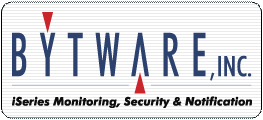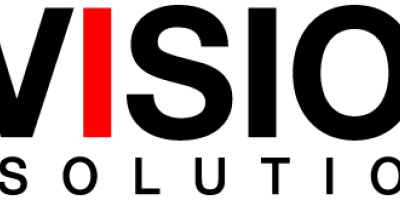Data security anxiety on the part of consumers, businesses, and, hence, regulatory bodies has increased dramatically recently, and the concern likely won't abate much any time soon. Because the threat is often perceived as arising from exposure to the Internet, some people think that implementing a sophisticated firewall is a sufficient answer. It's not. In fact, studies show that about two-thirds of security breaches originate inside the firewall. Thus, despite the superior security features inherent in System i, the existing OS/400 and i5/OS defenses must be augmented. Bytware's StandGuard Network Security can help you address this requirement.
StandGuard Network Security 3.0, announced in July of this year, is more than just an upgrade to Bytware's security solution. It's a total rewrite. The new version moves the product from a transaction-based model to an object-based approach that is consistent with OS/400 and i5/OS object security.
The move to object-based security is important. A transaction-based security product records keystrokes and SQL statements, requiring that each be approved before the activity is allowed. This is a very time-consuming and error-prone approach to security. What's more, whenever transactions change, even slightly, the security software will likely reject the new transactions, thereby curtailing legitimate work until the security rules are updated.
StandGuard Network Security's object-based security avoids these problems by looking not at transactions, but rather at the objects that transactions access. It then determines whether the user is authorized to use those objects.
Protect All Relevant Exit Points
StandGuard Network Security is not the only object-based software on the market, and it can be difficult to evaluate the merits of the various products. For example, System i security products perform their work through exit points. Many vendors tout the number of exit points they cover as a primary selling point. That's confusing because different vendors count exit points differently. For example, OS/400 has three exit points for FTP server logon, but, according to the IBM documentation, only one of them can be registered in OS/400. Some vendors count these as three separate exit points, but, because of the single-registration limitation, Bytware counts them as one.
Because of these different counting methods, when evaluating security software, be skeptical about the absolute number of exit points listed in the marketing literature. What's more important than the number is which of the relevant i5/OS and OS/400 exit points the software covers. StandGuard Network Security protects all exit points that can be used to access data and run commands, thus providing security for more than 160 server functions. A Technical Packet available on Bytware's Web site provides a complete list of the secured exit points.
Extensive Reporting
Comprehensive audit and reporting facilities have always been an important part of any security solution, but they're crucial in today's strict regulatory environment. StandGuard Network Security provides extensive reporting capabilities. In addition, administrators can monitor events in real time to track down and, if necessary, stop suspicious activity.
StandGuard Network Security provides a number of standard reports, including these:
- Events by date and time
- Events by server
- Events by library
- Events by directory
- Public events (identifies network activity resulting from public access to StandGuard Network Security resources)
- Events by user, location, or group
- Rejected events
- Events by resource
- Events by private authority (identifies events that have occurred as a result of private authorities that you created)
- Captured SQL statements
You can use several selection criteria to refine the reports and pinpoint items of concern. In addition to being printed, reports can be output to Excel for further analysis.
StandGuard Network Security can also send automated real-time alerts to systems staff, allowing them to take immediate action when necessary.
Phased Implementation
One important point of differentiation between security solutions is their implementation approach. Some products require that you start by locking everything down and then unlocking transactions or objects (depending on their design) as you identify user requirements. The problem is that even with the most rigorous of needs analysis processes, some user requirements will inevitably be missed. The result is that, when the security software is implemented, the overlooked processes will be blocked and business operations will stop until the appropriate authority is granted.
Bytware takes a different approach. The design of StandGuard Network Security allows a three-phase approach to exclusion-based security policy implementation that won't risk disrupting normal operations.
The first phase is simply software installation, which does not impede network access in any way. In fact, until after the second phase, users are not aware of the software's existence.
Next, in the "Trust-Based Security Phase," you block any obviously inappropriate access to resources. Everything else is allowed. The idea is to prevent the most egregious breaches, while minimizing the risk of locking out valid business operations.
At the end of the Trust-Based Security Phase, your network security will likely still be considerably looser than you would prefer. The Exclusion-Based Security Phase tightens it. In this phase, you identify all authorized sources and their legitimate resources, creating private authorities for users and groups to access the resources they need and excluding public access to restricted resources so that only those users and groups that have been granted the necessary private authorities will be able to access them.
After implementation, all data and network access events will be logged. You can use the extensive reporting facilities of StandGuard Network Security to monitor activity and tweak the security settings as appropriate.
Addressing the Need
According to studies, nine out of 10 major government and business organizations report computer security breaches of some sort each year, with an average loss exceeding $200,000. As the calls for corporate and government accountability grow louder, action is required. StandGuard Network Security offers a way to address this requirement by complementing the security inherent in System i.
Joel Klebanoff is a consultant, a writer, president of Klebanoff Associates, Inc., a Toronto, Canada-based marketing communications firm, and author of BYTE-ing Satire. Joel has 25 years experience working in IT, first as a programmer/analyst and then as a marketer. He holds a Bachelor of Science in computer science and an MBA, both from the University of Toronto. Contact Joel at

Bytware, Inc.
9440 Double R Blvd, Suite B
Reno, Nevada 89521-5990
Tel: 775.851.2900 or 800.932.5557
Web: www.bytware.com
























 More than ever, there is a demand for IT to deliver innovation. Your IBM i has been an essential part of your business operations for years. However, your organization may struggle to maintain the current system and implement new projects. The thousands of customers we've worked with and surveyed state that expectations regarding the digital footprint and vision of the company are not aligned with the current IT environment.
More than ever, there is a demand for IT to deliver innovation. Your IBM i has been an essential part of your business operations for years. However, your organization may struggle to maintain the current system and implement new projects. The thousands of customers we've worked with and surveyed state that expectations regarding the digital footprint and vision of the company are not aligned with the current IT environment. TRY the one package that solves all your document design and printing challenges on all your platforms. Produce bar code labels, electronic forms, ad hoc reports, and RFID tags – without programming! MarkMagic is the only document design and print solution that combines report writing, WYSIWYG label and forms design, and conditional printing in one integrated product. Make sure your data survives when catastrophe hits. Request your trial now! Request Now.
TRY the one package that solves all your document design and printing challenges on all your platforms. Produce bar code labels, electronic forms, ad hoc reports, and RFID tags – without programming! MarkMagic is the only document design and print solution that combines report writing, WYSIWYG label and forms design, and conditional printing in one integrated product. Make sure your data survives when catastrophe hits. Request your trial now! Request Now. Forms of ransomware has been around for over 30 years, and with more and more organizations suffering attacks each year, it continues to endure. What has made ransomware such a durable threat and what is the best way to combat it? In order to prevent ransomware, organizations must first understand how it works.
Forms of ransomware has been around for over 30 years, and with more and more organizations suffering attacks each year, it continues to endure. What has made ransomware such a durable threat and what is the best way to combat it? In order to prevent ransomware, organizations must first understand how it works. Disaster protection is vital to every business. Yet, it often consists of patched together procedures that are prone to error. From automatic backups to data encryption to media management, Robot automates the routine (yet often complex) tasks of iSeries backup and recovery, saving you time and money and making the process safer and more reliable. Automate your backups with the Robot Backup and Recovery Solution. Key features include:
Disaster protection is vital to every business. Yet, it often consists of patched together procedures that are prone to error. From automatic backups to data encryption to media management, Robot automates the routine (yet often complex) tasks of iSeries backup and recovery, saving you time and money and making the process safer and more reliable. Automate your backups with the Robot Backup and Recovery Solution. Key features include: Business users want new applications now. Market and regulatory pressures require faster application updates and delivery into production. Your IBM i developers may be approaching retirement, and you see no sure way to fill their positions with experienced developers. In addition, you may be caught between maintaining your existing applications and the uncertainty of moving to something new.
Business users want new applications now. Market and regulatory pressures require faster application updates and delivery into production. Your IBM i developers may be approaching retirement, and you see no sure way to fill their positions with experienced developers. In addition, you may be caught between maintaining your existing applications and the uncertainty of moving to something new. IT managers hoping to find new IBM i talent are discovering that the pool of experienced RPG programmers and operators or administrators with intimate knowledge of the operating system and the applications that run on it is small. This begs the question: How will you manage the platform that supports such a big part of your business? This guide offers strategies and software suggestions to help you plan IT staffing and resources and smooth the transition after your AS/400 talent retires. Read on to learn:
IT managers hoping to find new IBM i talent are discovering that the pool of experienced RPG programmers and operators or administrators with intimate knowledge of the operating system and the applications that run on it is small. This begs the question: How will you manage the platform that supports such a big part of your business? This guide offers strategies and software suggestions to help you plan IT staffing and resources and smooth the transition after your AS/400 talent retires. Read on to learn:
LATEST COMMENTS
MC Press Online